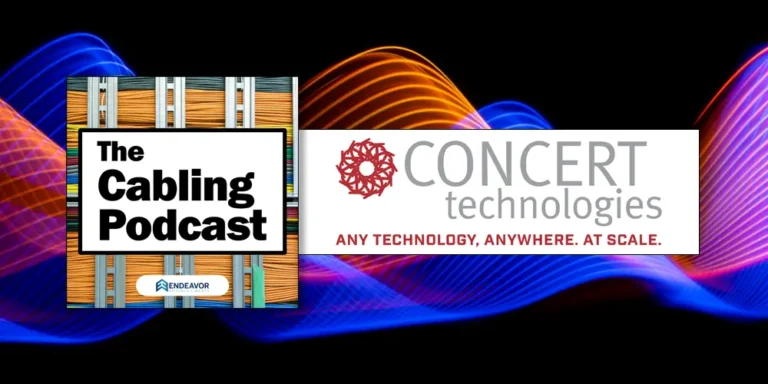Congratulations! You are through the product selection of a multi-site technology rollout and have signed a contract with your chosen vendor. Now you’re ready to start using your new technology at all your different business locations… But wait, there’s still something left to do—it’s the deployment! Don’t worry, the technology rollout process doesn’t have to be a painful one.
We have compiled a detailed guide to a pain-free multi-site technology rollout so that you can ensure your next technology deployment is a complete success.
Preparation is Important
“French in 10 Minutes a Day” is one edition from a popular language book series launched in the early 1980s. The first lesson in this book covers the seven key question words or phrases, that you need to achieve a basic grounding in the language. They are Who, What, When, Where, Why, How, and How Much.
The great news for us, is that these same seven words and phrases, are also applicable to achieving basic mastery of a multi-site technology rollout. In this context, your chosen product vendor should be able to answer the questions of “How?” and “How Much?” for you. But for your rollout to succeed, your team must be able to answer the other five questions before you start the project.
Let’s discuss how they can be answered from a rollout project management perspective.
Who?
Who are the internal project stakeholders? Assembling the right team and agreeing ownership, ensures that communication is clear and effective. Having the right stakeholders onboard will also keep the project moving faster and at a higher quality.
Too often, technology deployments struggle because internal groups operate in silos. With no-one having overall control, tasks are delayed because the groups don’t share a common picture of priorities and dependencies. This can be overcome by appointing an internal project owner, and granting them authority over the resources of other departments involved, for the life of the project. This issue is often worse with external parties, as they are not even part of the same organization.
It will be up to you to get your internal project manager on board. When it comes to selecting your technology rollout company, they must have a strong project management office with a dedicated project manager and support team for your multi-site rollout. For large scale technology rollouts, you are highly recommended to visit the rollout company project management office (PMO), to see what they do and how they do it. Informal and unexpected PMO visits are always best, as you will see things as they really are.
What?
It is important to remember that we are dealing with human on site contacts, who will naturally want to know what to expect when the field tech arrives. The technology rollout company should have a thorough understanding of the project scope and use that to give you a boilerplate email with semi-scripted content. The email is used to explain the work to your site points of contact. The result of this is they feel that they are a part of the deployment, not just “following orders”.
When?
What is the target date by which the rollout must be completed? Depending on the technology and business objectives, there may be business-critical dates by which you must finish. An example of this, might be that a retail point of sale (POS) system upgrade should to be complete and fully tested well in advance of the busy Thanksgiving/Holiday period. Be aware that there may also be key times for each site, e.g. work to be performed overnight, so as not to interrupt daily operations.
Where?
Where the sites are located is typically known, but knowing where to install equipment and/or cabling will vary from site to site. In some cases, it may seem obvious, but until you do the work it could change. Depending on the scope of work and the rollout, it may require site surveys. to give you a clear idea. In some cases though, surveys may not be justifiable due to cost. In this case, you may want to only incur a survey at the time of install, while the field tech is onsite if benchmark requirements cannot be met. When this happens, it is better to utilize the fields tech already onsite and turn the visit into a survey.
Why?
Why is the new technology being deployed? It is important the technology is explained to the sites well in advance of the rollout, so they can understand why this will make your organization better. Also, don’t forget to keep them in the loop throughout the rollout period. Depending on the length, it is good to have a brief email or newsletter explaining the progress of the rollout. The last thing a technology rollout company wants, is to be on site with a point of contract who feels they have been left out of the loop and the TRC is invading their space.
What business advantage does new technology provide? Knowing the answers to this questions is important, because any deployment has the potential to disrupt on-site activities and inconvenience staff. When negotiating access with on-site points of contact, it helps to be able to explain the business drivers that are behind the work to be performed.
So, now we have the answers to these questions, what do we do next?
Understand Your Goals
Establishing your success criteria is essential to a successful deployment, but how do you define them accurately? For example, it’s important that the rollout’s technical goals be kept as simple as possible, as complexity increases risk and cost.
It should be noted that your rollout goals should encompass both the business and technology requirements of the project. This is because new deployments represent the perfect time to review existing business operations.
Poor decisions are sometimes made, to achieve goals through a complicated and less efficient solution. A rollout goal of “high-quality service” sounds good, but how is it to be measured? Time should be taken to define measurable, meaningful quality-oriented performance metrics – ones that can be used to manage your rollout. Once these metrics are defined – the technology rollout company should be able to assist – they must be tracked by the rollout company. Examples of key metrics are number of issue reports, tech on-time, number of revisits…
Multi-site rollout management should be “quality-centric” in approach. In other words, all activities performed should be oriented toward consistently achieving the highest possible quality of installation, as this is the best way to ensure a great customer experience.
Simplest is Best. So Start Simple
Sir Isaac Newton, the 17th century mathematician, astronomer, and physicist, said that “Nature is pleased with simplicity. And nature is no dummy.” This quote can be applied to technology rollouts too.
A great example of the need for simplicity can be found in the Scope of Work (SOW) for the work. Are the skills and tools required to deliver the SOW tightly defined? Is it ‘vanilla’, i.e. straight from the vendor’s installation guide, or has it been adapted to your requirements? Does it contain extraneous steps? Are there steps where the person performing the work must exercise their judgement? Does it accommodate local differences in environment? If the answer to any of these questions is ‘no’, you are at risk of having inconsistent deployment quality, and variable quality is the enemy of rollout success.
When crafting the solution, it is best to use an approach that we call “minimizing to maximize”. Always aim to deliver the solution to your business problem in as few steps as possible. At all cost, you must avoid extraneous work and requiring on-site staff to make judgement calls. These introduce significant risk of variance – even more so when each on-site deployment is performed by a different person, as is often the case with multi-site rollouts.
This is best addressed using skilled project managers who can transform your raw SOW into a focused, crisp work order packet (WOP). This is then communicated to local field technicians with minimal risk of misinterpretation. Once you’ve done this, use a pilot deployment phase to execute, measure, and adjust your plans until you are comfortable that they are robust.
Embrace Change
Organizations often adopt new technologies to differentiate themselves from their competitors. Because of this, change is a fact of life in business operations.
The introduction of new technology also provides an opportunity to re-evaluate existing business process. Your technology rollout company should be able to provide you reports, metrics, and lessons learned at the closeout. It is important that this is done, because refusing to adjust processes may invalidate the business case for new technologies.
A good technology rollout company can help you manage through this change. By relieving you of the burden of running the rollout, and dealing with all the logistical and on-site aspects of the project, you are free to manage any organizational change that accompanies the project.
The Bottom-Line: Get Yourself a Rollout Partner
Delivering a successful multi-site technology rollout is not easy. For the unwary, there can be problems lurking around every corner. Failure to anticipate and neutralize these problems can lead to a poor customer experience.
If you need to deploy new technologies at scale, and you want your customer experience to be a great one, you need to find a technology rollout company who will partner with you. So, before you begin your next technology rollout, ask your rollout company how they can do that.
If you don’t like their answer, talk to us: we ‘d love to tell to you about the experiences we have gained from hundreds of thousands of technology rollouts over two decades. The proof of the value of our approach, is shown by our 99.7% “Done Right First Time” performance, as well as our industry-leading high customer satisfaction.




